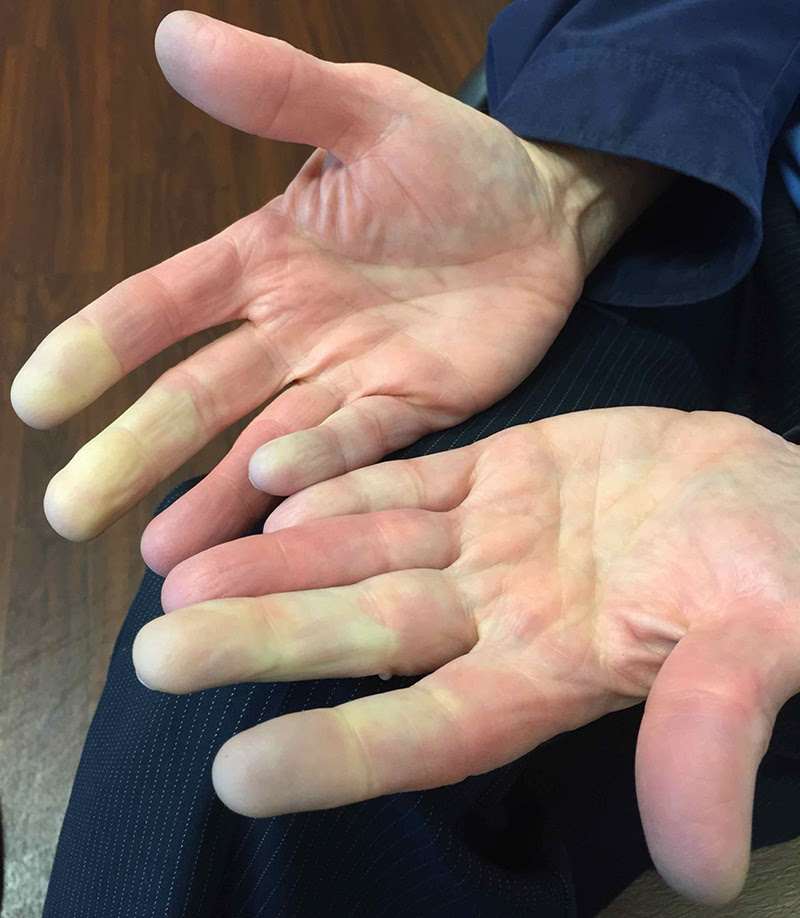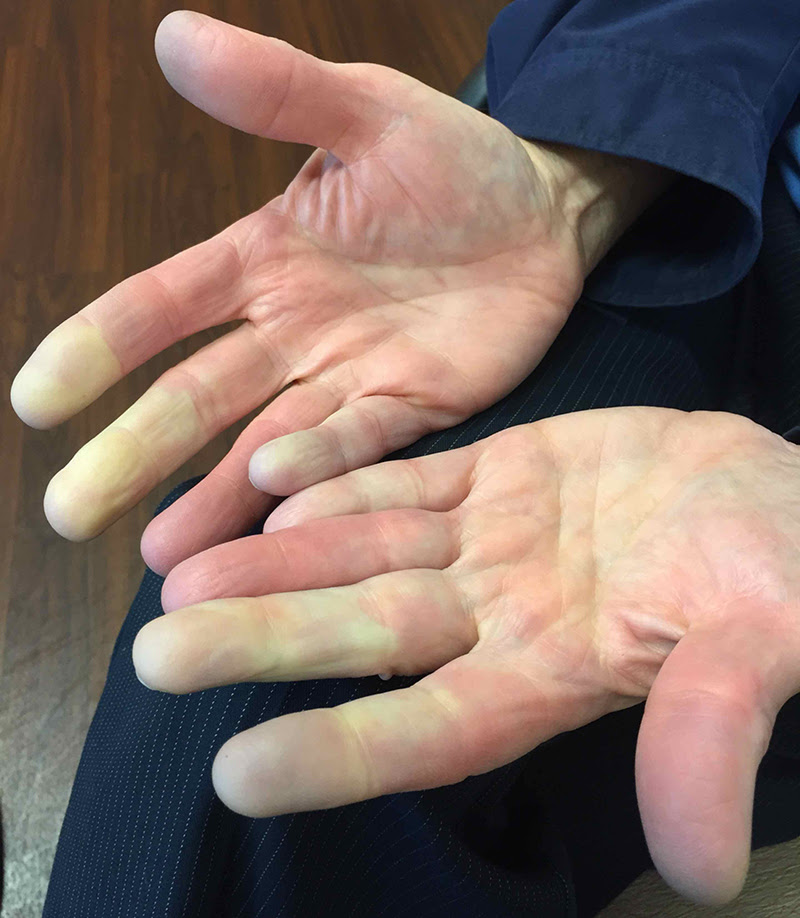Figure 1 Quiz of the Week
A 40-year-old male presents to the emergency department with sharp chest pain and palpitations. He says the pain is worse when he lies down and is exacerbated by coughing, but improves when he moves to a seated position. He was recently diagnosed with systemic lupus erythematosus (SLE) after investigation for recurrent cyanotic discoloration and numbness of his fingers following exposure to the cold, as well as small-joint polyarticular arthritis.

Image credit: @mscard.
Answer: Pericardial friction rub
This patient’s presentation is suggestive of pericarditis, secondary to SLE. Pericarditis, an inflammation of the pericardial sac, is the most common cardiac manifestation of the condition occurring in approximately 25% of SLE patients. The major clinical manifestations of pericarditis include pleuritic chest pain, diffuse ST elevation and PR depression on ECG, and a pericardial friction rub. This specific finding—described as having a scratching, grating, or squeaky quality—is highly specific for the condition and should alert clinicians to investigate for the diagnosis.
Read more and join the discussion now at Figure 1!
Explore cases, quiz yourself, and solve medical mysteries along with thousands of other medical professionals around the world on Figure 1, the free app where doctors expand their clinical knowledge.

